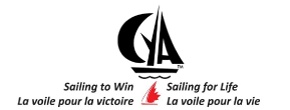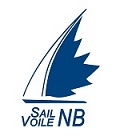PHRF Rating System
The Shediac Bay Yacht Racing Association has been for many years now using the Performance Handicap Racing Fleet (PHRF) rating system to handicap different models of yachts participating in the various classes of races it organizes and manages in Shediac Bay during the summer months.
The following sections describe the PHRF rating system and explains how the SBYRA has applied it to its’ racing fleet. The scoring system used to establish corrected times for racing yachts is also described.
As long as boats of different designs have raced against one another, skippers have sought an equitable method of handicapping. Various systems have been based on boat performance or measurement, or a combination thereof. In Southern California, where PHRF originated, one method or another of performance handicapping has been in use since 1906.
Measurement-based rating systems such as IOR, or IMS have proven to be costly, and complex. Most importantly, yacht designers have been able to "out-design" the rule, resulting in inequities that cannot be corrected. Therefore, many skippers have turned to the performance-based handicap system as the best assurance of their continued opportunity to compete fairly against all designs, new and old.
This type of rating system was developed in the United States and replaced measurement based handicapping systems that were used in the past. Measurement systems rely on the accurate measurements of a large number of dimensions and features to determine an appropriate rating for a specific racing yacht. Eventually, racing organizations turned to performance-based handicap systems as the best assurance of their continued opportunity to compete fairly against all designs, new and old.
The PHRF rating system was developed in the United States and replaced measurement based handicapping systems that were used in the past. This system has spread rapidly throughout the country and is the predominant rating system in use in the United States and Canada. There are no national PHRF ratings per se, and the US SAILING National PHRF Committee is only advisory in nature. However, US Sailing publishes a listing of all the PHRF ratings throughout North America.
PHRF EXPLAINED (briefly) Back to top
PHRF performance handicaps are boat performance handicaps based on the speed potential of the boat determined, as far as possible, by observations of race results. The intent of PHRF handicapping is that any well-equipped, well-maintained and well-sailed boat has a good chance to win; and any boat that wins a PHRF race is indeed well equipped, well maintained, and well sailed. Handicaps are adjusted, as needed, on the basis of the boat’s class performance so that each boat class will have an equal opportunity to win. This is the fundamental concept.
PHRF handicaps are not intended to reflect the capability of the skipper and crew. Handicaps are not adjusted to permit a poor or careless skipper to score in the upper third of the fleet. Doing well in a race, therefore, requires the exercise of skill and ability. Consistently poor performance, sloppy maintenance, or deliberately holding back will not result in a more favourable handicap. Conversely, if a skipper and crew sail the boat well and consistently place high this will not, by itself, lead to a handicap that is less favourable than that of the actual performance potential of the boat.
SBYRA APPLICATION OF PHRF RATINGS Back to top
Any rating system used by a yacht racing authority has the potential to spark controversy as yacht owners/skippers can always question whether the system being used appropriately takes into account local conditions. SBYRA is a small organization with a relatively small fleet that doesn’t allow for the collection of a large quantity of race data performance.
In 2011, by majority vote, SBYRA decided to adopt the PHRF ratings assigned by the Nova Scotia Yachting Association. This organization has a PHRF Rating Review Committee and has data on a significant fleet. The Northumberland Straight Yachting Association has also decided to adopt the NSYA ratings.
Some yachts are impacted more than others. To allow for a transition, no boat in the SBYRA fleet will be penalized by more than 5 sec/mi per year (from the rating applied by SBYRA in 2010) until their rating is equal to that assigned by the NSYA.
CHANGING A BOAT'S PHRF RATING Back to top
The SBYRA doesn’t at this time have a formal structure and doesn’t have a formal process to re-evaluate a boat’s PHRF rating. It will therefore accept the ratings established by the NSYA unless unusual circumsatnces warant conducting a review for a specific boat.
DETERMINING CORRECTED TIME Back to top
SBYRA uses the Time-on-Time method to calculate a Time Correction Factor that allows converting "elapsed time" to "corrected time". The corrected time in turn establishes the order of finish (1st, 2nd, 3rd, etc...) of a race for a given class of yachts.
The formula to establish the Time Correction Factor is as follows:
TCF = 650 / (520 + PHRF Rating)
CLASS CUTOFFS Back to top
Racing organizations are allowed to make modifications to the class cutoffs based on the PHRF Assigned Speed Potential Ratings. To ensure more boats are grouped in the B class, we’ve included boats that have a 150 rating.
Here are the class cutoffs (base ratings with spinnaker and other adjustments):
Class A - PHRF rating 144 and lower
Class B - PHRF rating between 145 and 191 inclusive.
Class C - PHRF rating of 191 or higher.
Cruising – Yachts not using spinnaker or whisker poles .



.jpg)